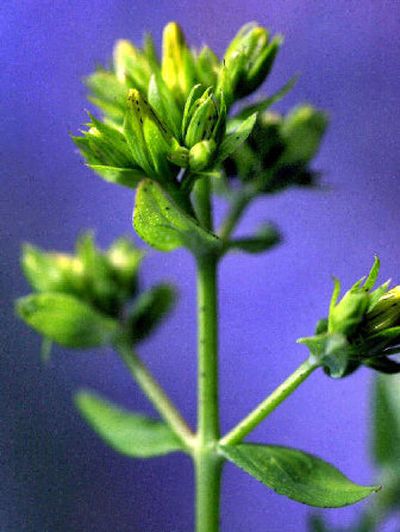Be aware of noxious weeds

I have a couple of questions: How can you control hawkweed and St. John’s wort? I live in Colville at 3,000 feet elevation; we have 57 acres of trees. Both weeds are spreading. Is there any help?
William and Nancy King, Colville
I’m glad you asked about these two noxious weeds. There is currently a major effort in the Inland Northwest being funded by a Forest Service grant to raise awareness of the problem with these weeds and others that are taking over native vegetation. The project is being managed by the Ferry and Spokane County Extension Offices
Hawkweeds are pretty when they bloom but they form tight mats that crowd out desirable vegetation that support wildlife and domestic animals.
Digging can remove small patches. Mowing only encourages them to send up seed heads below the mower height. There are no bio-control insects known for this plant. Given that you have trees, about the only herbicides you can use are the 2,4-D products.
St John’s wort also forms dense stands that crowd out other plants. When eaten by animals, it can trigger a photosensitive reaction similar to sunburn on light colored animals. Pulling can take care of small patches if all of the root is removed and the plant is then removed from the site.
There are some leaf-eating beetles (Chrysolina hyperici is one) being used as a bio-control on this plant.
As with the hawkweeds, there are herbicides available that will work on St. John’s wort. For both weeds, I strongly suggest you stop by the Stevens County Weed Board Office at 230 Williams Lake Road in Colville or call them at (509) 684-7590 for more detailed information.
Wildlife strip sapling
A moose or a deer ate all except a few leaves at the top of a maple sapling – do you think it can recover? Also, wild rose bushes are taking over the field around my home. Are they becoming invasive?
Florence Farber, Harrison, Idaho
Deer and moose have a liking for tender-green anything in the spring. Their munching probably set the tree back but with proper care it is likely to recover. First, put a wire cage around the tree. Anchor the wire with very sturdy stakes. If they nibbled on it now, they probably will beat it to pieces in the fall when the bucks are knocking their velvet off. Even though it looks ugly, plan on leaving a cage in place for several years until the tree gets some height. There are also deer repellants available but I wouldn’t rely solely on them. Make sure it gets regular deep watering through the end of October so it doesn’t go into winter dry. Don’t fertilize it now as it might not have time to harden off any new foliage that may sprout before fall. Fertilize it in the early spring with a balanced fertilizer.
As to wild roses in your field, they are a native plant that is valuable as shelter and food for animals and birds. So leave them be and enjoy all the activity they draw. The flowers are a bonus.